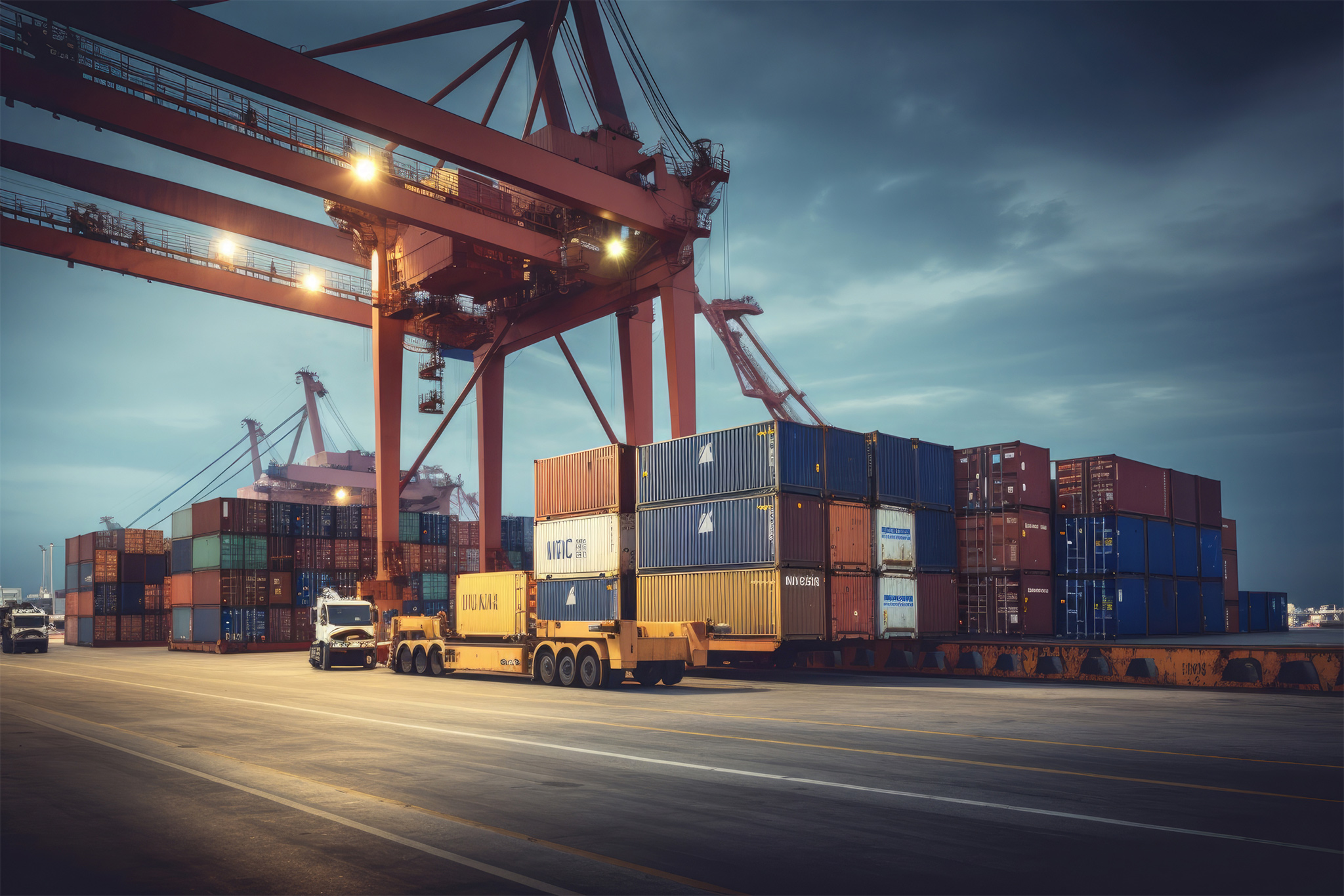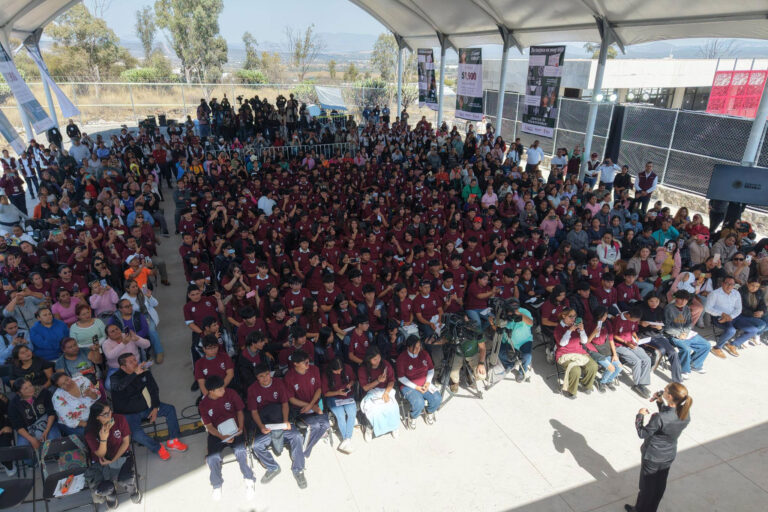Mexico Faces the Mirage of Nearshoring
This editorial by José Romero, Director of the Centro de Investigación y Docencia Económicas (CIDE), originally appeared in the August 11, 2025 edition of La Jornada, Mexico’s premier left wing daily newspaper. CIDE is a publicly-financed social sciences research center aiming to impact the country’s social, economic and political development. The views expressed in this article are the author’s own and do not necessarily reflect those of the Mexico Solidarity Project.
Today, the United States recognizes China’s rise as an economic, technological, and military power as an existential risk. In 2000, the U.S. manufacturing sector was four times larger than China’s; just two decades later, the situation has reversed: China’s industrial production far exceeds that of the U.S. This productive and geopolitical reversal, accelerated by China’s entry into the WTO in 2001, has eroded the U.S. industrial base, displaced millions of jobs, and weakened its technological capacity. Washington has concluded that the only way to preserve its global leadership is through profound reindustrialization that recovers productive capacity, technological autonomy, and strategic advantage.
This is a state project that seeks to repatriate manufacturing jobs, rebuild the productive base, and regain control of key sectors such as semiconductors, batteries, steel, pharmaceuticals, and defense. This comprehensive strategy combines tariffs, massive subsidies, public procurement, strict regulations, and political pressure on partners and competitors. The objective is to protect essential industries, reduce dependence on external supply chains, and reaffirm its economic power as the foundation of its political and military hegemony.
In Washington, they know that technological leadership cannot be sustained without a strong industrial base. Innovation emerges from productive capacity: in product engineering, process improvement, and the creation of advanced materials. When manufacturing weakens, so does the capacity to generate and retain knowledge. Reindustrialization is not a whim or a passing fad; it’s a strategic necessity. To think that, when Trump or another president with an aggressive rhetoric leaves, everything will return to normal and Mexico will continue as before is to ignore the fact that reindustrialization is already a state policy with broad consensus in Washington and support from the most influential industrial sectors.
Along these lines, tariffs are a key weapon. Taxes of 25 or 30 percent make imports more expensive and force companies to set up in the US. Mexico faces the same barriers, and many foreign subsidiaries that currently produce here are already calculating that it is more advantageous to move their production north of the border. Added to this are programs like the CHIPS Act and the Inflation Reduction Act, which offer subsidies and tax breaks. All of this is part of a long-term policy to reindustrialize the US and prioritize partners that provide technology, innovation, and high added value, not just cheap labor.
Believing that this industrial cycle will bring a wave of investment to Mexico is an illusion that delays the formulation of a national industrial policy.
Mexico must abandon the idea that the US will relocate manufacturing currently located in Asia to North America, and that, due to its proximity, we will automatically benefit. The true strategy is reshoring: bringing production back to its territory and integrating only partners with resources or technological capabilities that the US cannot develop alone. Believing that this industrial cycle will bring a wave of investment to Mexico is an illusion that delays the formulation of a national industrial policy.
Reshoring imposes strict filters: high domestic content, demanding technical standards, safety certifications , and restrictions on foreign participation in strategic contracts. Even in sectors where Mexico has influence, access to the most profitable value chains will depend on meeting these requirements. Added to this is the fact that our international image is marked by migration, insecurity, and poverty, factors that do not place us in a privileged position. These ills are the result of more than four decades of economic stagnation, deindustrialization, and social decay, a product of following Washington’s guidelines. This backwardness now serves as justification for not being considered in the new U.S. industrial strategy.
Thinking this strategy will fail is a mistake. Hysteresis reinforces the trend: once it generates well-paying jobs, revitalizes industrial regions, and rebuilds productive ecosystems, reversing it will be costly and unfeasible. Although its success is not guaranteed, it is likely to become consolidated as state policy even under Democratic Party governments. Mexico must assume it will work, and we are not included.
If Mexico fails to act, it will be confined to assembly and basic manufacturing, competing with countries with even lower wages. The loss of strategic investments will reduce opportunities for well-paying jobs, accelerate migration, and widen internal inequality. This lag will lead to prolonged economic stagnation and further social disintegration, fueled by poverty, insecurity, and a lack of prospects for millions of people.
While other countries are adapting quickly—Canada with incentives for batteries and electric vehicles; South Korea and Japan with strategic agreements to secure a presence in semiconductors and critical materials; Germany moving production to the US to avoid tariffs; and Vietnam taking advantage of the outflow of manufacturing from China—Mexico remains immobile. It lacks an industrial policy capable of strengthening its productive base through the development of domestic suppliers and entrepreneurs, the mobilization of its own capital, the creation of an effective development bank, the substitution of key imports, investment in infrastructure and technical training, and access to long-term productive financing. Without these actions, the gap with our competitors will widen.
Moving up the value chain requires gradual progress, accumulating productive, technological, and human capabilities. Without a diversified industrial fabric, with companies competitive in quality, cost, and innovation, integration into the strategic sectors of the fourth industrial revolution will remain rhetoric.
For Mexico, this shift implies the definitive exhaustion of the maquiladora model consolidated by NAFTA and the USMCA. U.S. reindustrialization redefines the rules of competition and reorganizes value chains based on interests that do not include us. If we do not act now, it will not be nearshoring that transforms us, but rather reshoring that displaces us and condemns us to being mere spectators of the new industrial order. The decision is immediate: break with four decades of dependence and build a solid productive base or resign ourselves to being sidelined in the new manufacturing era.
-
The Poor as Instruments, Not Allies
Welfare programs with political aims are not the same as forging political alliances with the impoverished population created by voracious neoliberal capitalism.
-
Florida, the Race for the Presidency & Opaque Capital
Contemporary Florida is the distorted and advanced mirror of a new form of global governance, where money laundering has not only been tolerated, but institutionalized & updated for the digital age, fed by a murky river flowing from the Global South.
-
People’s Mañanera December 22
President Sheinbaum’s daily press conference, with comments on economic achievements, Sonora development plan, extortion of immigrants, Baja California Sur dam, water treaty with US, nepotism loopholes, and García Luna.




